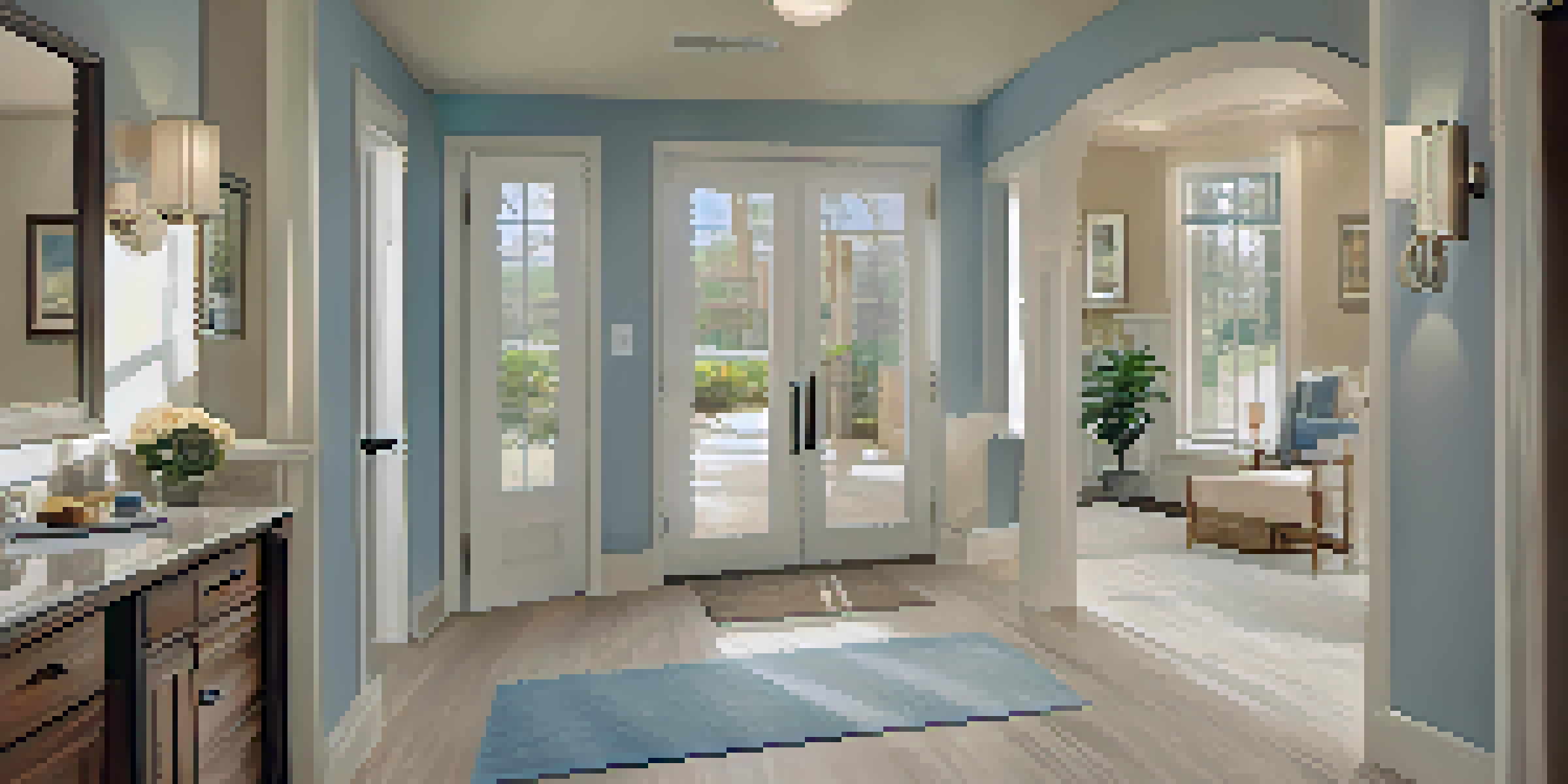Incorporating Safety Features into Accessible Homes

Understanding Accessibility in Home Design
Accessibility in home design means creating spaces that everyone can use comfortably, regardless of their physical abilities. This approach not only benefits those with disabilities but also makes homes safer for the elderly and children. By focusing on accessibility, homeowners can ensure that their living spaces cater to a wider range of needs.
Accessibility is not a charity; it is a right.
For instance, consider the importance of eliminating barriers. Simple changes like removing steps or adding ramps can make a world of difference. Additionally, ensuring hallways and doorways are wide enough for wheelchairs or walkers is a crucial aspect of accessible design.
Ultimately, accessibility is about inclusivity and safety. It allows everyone to navigate their home with ease, reducing the risk of accidents and promoting a sense of independence.
Key Safety Features for Accessible Homes
When designing an accessible home, safety features should be prioritized. These can include grab bars in bathrooms, non-slip flooring, and adequate lighting throughout the space. Such elements not only enhance safety but also contribute to a more welcoming environment.

For example, installing grab bars near toilets and showers can prevent falls, which is a common concern for many people. Non-slip flooring can further reduce the risk of slipping, particularly in areas prone to moisture, like kitchens and bathrooms.
Accessibility Enhances Inclusivity
Designing homes with accessibility in mind ensures comfort and safety for everyone, including those with disabilities, the elderly, and children.
Moreover, proper lighting is essential for visibility, especially for those with visual impairments. By combining these features, homeowners can create a safer living space that caters to the needs of all residents.
Designing for Mobility Challenges
Mobility challenges can greatly influence home design. It's important to consider features that accommodate wheelchairs, walkers, or other mobility aids. This can involve strategically placing furniture and ensuring that pathways are clear and unobstructed.
The best way to find yourself is to lose yourself in the service of others.
For instance, using adjustable furniture can provide flexibility, allowing users to adapt their environment to their needs. Additionally, a well-planned layout that prioritizes open spaces can make movement easier.
By focusing on mobility-friendly design, homeowners can create a more functional and safe living environment. This not only enhances comfort but also promotes independence for those with mobility challenges.
Smart Technology for Enhanced Safety
Incorporating smart technology into accessible homes can significantly improve safety. Devices like smart doorbells, automated lighting, and voice-activated systems can make daily tasks easier and safer. These technologies can be particularly useful for individuals with limited mobility or cognitive impairments.
For example, a smart doorbell can allow residents to see who is at the door without needing to get up. Automated lighting can be programmed to turn on as someone approaches, preventing accidents in dark areas.
Safety Features are Essential
Incorporating safety features such as grab bars, non-slip flooring, and proper lighting creates a welcoming environment that mitigates risks.
By embracing smart technology, homeowners can not only enhance safety but also add a layer of convenience to their lives. This innovation represents a step forward in making homes truly accessible for everyone.
Emergency Preparedness in Accessible Homes
Emergency preparedness is a critical aspect of safety in accessible homes. Having a plan in place can make all the difference during unexpected situations. This includes ensuring that exits are clear and easily navigable for those with mobility challenges.
Additionally, creating an emergency kit that is accessible to all residents is essential. This kit should include necessary supplies and information on how to contact emergency services, emphasizing the importance of being prepared.
By prioritizing emergency preparedness, homeowners can ensure that everyone knows what to do in case of an emergency. This proactive approach fosters a sense of security and confidence among all residents.
Creating Safe Outdoor Spaces
Safety features should extend beyond the walls of the home to outdoor spaces as well. Accessible outdoor areas can provide residents with opportunities for recreation and relaxation while ensuring safety. This can involve creating smooth pathways, accessible seating, and well-maintained landscaping.
For example, using materials that are easy to navigate, like concrete or asphalt, can make outdoor spaces more accessible. Additionally, ensuring that outdoor furniture is at an appropriate height for wheelchair users can enhance comfort.
Community Support for Modifications
Homeowners can utilize community resources for financial assistance and expert advice to effectively implement accessible home modifications.
By designing safe outdoor spaces, homeowners can encourage an active lifestyle for all residents. This not only promotes physical health but also contributes to overall well-being.
Community Resources for Accessible Home Modifications
Many communities offer resources and support for individuals looking to make their homes more accessible. These resources can include financial assistance, grants, or advice on modifications. By tapping into these community resources, homeowners can better navigate the process of creating an accessible living space.
For instance, local non-profits often provide information on available grants for home modifications. These grants can significantly alleviate the financial burden associated with making necessary changes.

Additionally, seeking advice from professionals who specialize in accessible design can ensure that modifications are done correctly and efficiently. Utilizing community resources fosters collaboration and support among residents striving for safer, more accessible homes.